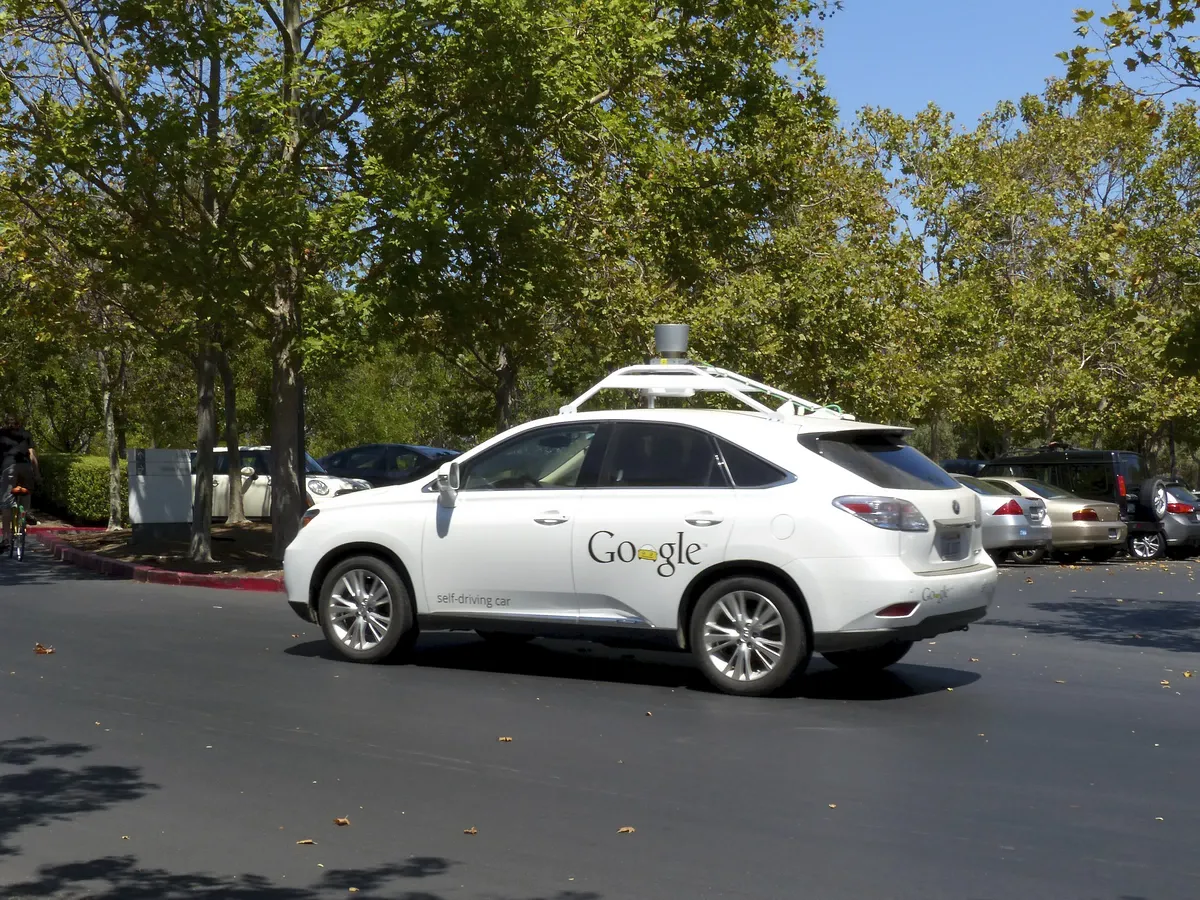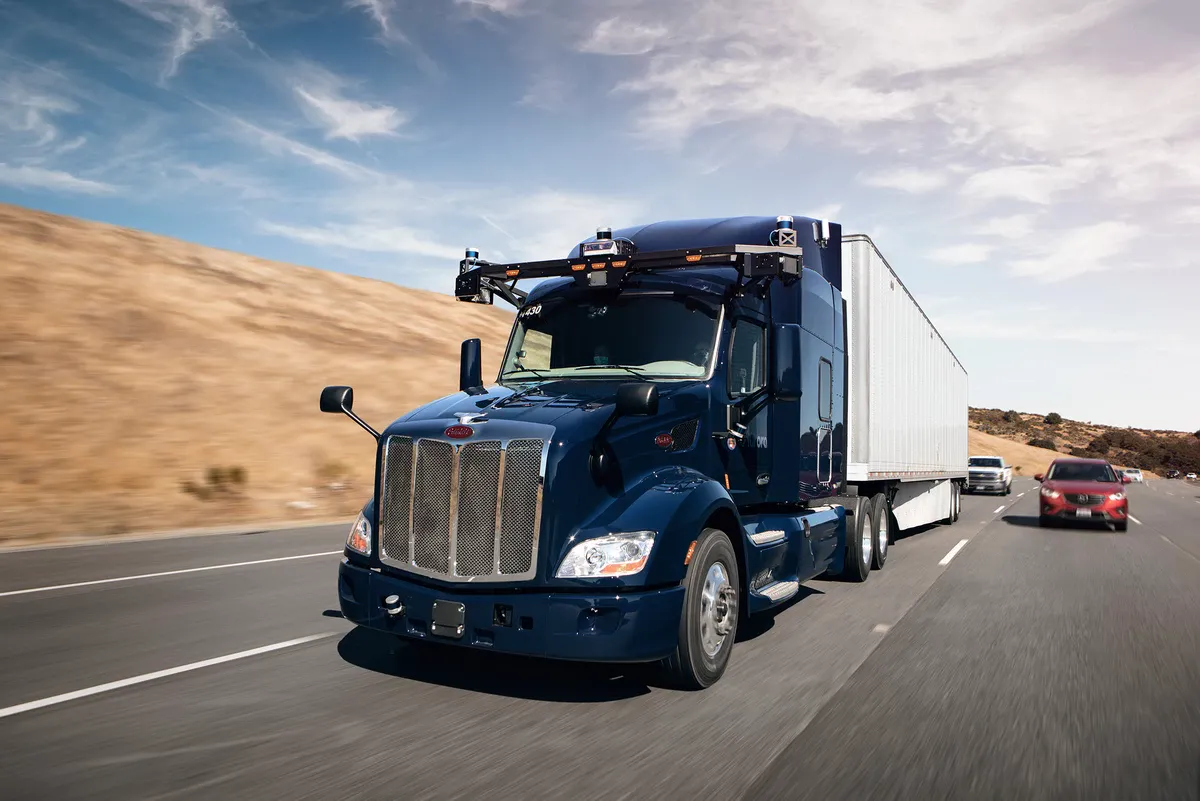Hey there, tech enthusiasts and trivia lovers! Picture this: a future where your car doesn’t need you at the wheel. A world where you can kick back, relax, and catch up on your latest binge-watch while cruising the highways.
Sounds dreamy, right? Well, that future isn’t as far away as you might think. And, if you’re thinking this is all sci-fi mumbo jumbo, prepare to be amazed. Here’s a list of fun facts about self-driving cars that’ll blow your socks off and make you the life of any party. Let’s zoom into the world of autonomous automobiles!
1. The Origin of the Dream
Long before we were swiping on smartphones, innovators were dreaming about cars that could drive themselves. Surprisingly, the spark of this idea was ignited way back in the 1920s. While most folks were grooving to jazz and flapper dances, there were those envisioning a future where cars took control.
As the decades rolled by, the dream persisted, gradually evolving from pure imagination to complex engineering projects. And here we are today, on the brink of making it mainstream.
2. Who’s Behind the Wheel? Spoiler: It’s Silicon
Open the door of a self-driving car, and you might be surprised to find no human in the driver’s seat. Instead, it’s silicon, circuits, and sophisticated software that take the wheel. These cars rely heavily on a combination of Artificial Intelligence, high-end sensors, cameras, and oodles of algorithms to make sense of the world around them. It’s like having an invisible robot chauffeur!
They process vast amounts of data in real-time, making decisions that ensure a safe journey. Essentially, it’s tech magic on wheels.
3. Early Adopters: It Wasn’t Google
Breaking news: Google wasn’t the first to hop onto the self-driving bandwagon! Before they made waves with Waymo, it was DARPA (Defense Advanced Research Projects Agency) that took the lead.
In the early 2000s, DARPA hosted a series of challenges pushing the boundaries of autonomous vehicle technology. These challenges, often set in rugged terrains, laid the foundation for many technological breakthroughs in the field. So, while Google might be the popular kid on the block now, remember it’s the trailblazers like DARPA that set the stage.
4. A Billion Hours of Testing Without a Coffee Break
Humans? We need our coffee breaks, our nap times, our weekends off. But self-driving cars? They’re the real MVPs when it comes to endurance.
Collectively, autonomous vehicles have undergone over a billion hours of testing! And no, they didn’t take a single coffee break. These vehicles have been put through their paces in varied environments – be it blistering heat, torrential rain, or the chaos of city traffic.
They’ve learned from each scenario, adapting and evolving. If they were humans, they’d probably be the most experienced drivers on the planet. And to think they did all this without once craving a latte or a cozy bed!
5. The “See-Everything” Lidar Technology
If you’ve ever glanced at a self-driving car and noticed something resembling a futuristic top-hat spinning on its roof, you’ve spotted the Lidar. But this isn’t any ordinary hat; it’s like giving the car superhuman vision!
Lidar, which stands for Light Detection and Ranging, uses laser beams to create a 3D map of the surroundings. This allows the car to “see” everything around it, from that sneaky pothole trying to mess up the journey to the unsuspecting squirrel making a dash across the road.
With a 360-degree view and pinpoint accuracy, it’s one of the critical technologies making self-driving cars fun facts come to life. Not so fun for hide and seek, though!
6. The World’s First Traffic Ticket for an Autonomous Vehicle
“Officer, it wasn’t me, it was the car!” Imagine being the operator of a self-driving car and hearing that you’ve been slapped with a traffic ticket. Yep, it happened! In 2018, a Waymo vehicle in California was pulled over and issued a ticket. The crime? Apparently, the car was moving too slowly and causing traffic backup. Talk about the quirks of modern life!
While no points were added to any driver’s license, it’s a fun trivia piece and perhaps a gentle reminder that the future, while exciting, can have its own set of (minor) road bumps.
7. They’ve Got Social Skills
No, they’re not gossiping at the local garage or updating their status on “Car-book”. But these autonomous beauties have a kind of social intelligence you wouldn’t expect.
One of the toughest challenges for self-driving cars is predicting human behavior, like a pedestrian suddenly deciding to jaywalk or a cyclist making a hand gesture.
The AI inside these vehicles is designed to understand, to an extent, human behavior and interact safely. They’re trained on countless scenarios, learning the subtle “social cues” of the road. So, while they might not wish you a “Happy Birthday“, they sure know when to pause for that kid chasing after a ball.
8. Raindrops Keep Fallin’ on Their Heads
Singing in the rain might be fun, but driving? Not so much. Especially if you’re a self-driving car! One of the quirky self-driving car fun facts is their initial struggle with the rain. Those droplets can play tricks on a car’s sensors, cameras, and that all-important Lidar we talked about.
Just like heavy rain can blur human vision, it can also distort the ‘sight’ of an autonomous vehicle. But fear not! Engineers are on it. With the power of advanced algorithms and constant updates, these cars are getting better at handling Mother Nature’s wet curveballs.
9. The “Turtle Problem” in Self-Driving Tech
If you’re thinking about cute, slow-moving reptiles, you’re on the right track. But what do they have to do with high-tech cars?
In tests, researchers discovered that some autonomous vehicles mistook a picture of a turtle for a… wait for it… pothole! Dubbed the “turtle problem”, it highlights the challenges and occasional humorous hiccups in AI image recognition.
This isn’t to say these cars can’t distinguish between animals and road features, but it underscores the need for continuous learning and refinement in the technology. Next time you see a turtle, maybe give it a nod for its unexpected contribution to tech trivia.

Angie Armstrong / Flickr
10. No Honking Here
If you’ve ever been stuck in traffic, you’re familiar with the symphony of car horns blaring around you. But when it comes to self-driving cars, things are a lot more… polite.
These high-tech autos don’t get road rage or honk out of frustration. They’re designed to patiently navigate through traffic, make decisions, and respond to various scenarios without the aggressive honks we humans are accustomed to. It might sound eerily quiet at first, but hey, less noise pollution is always a good thing, right?
11. Training with Video Games
Alright, gamers, this one’s for you! One of the unexpected fun facts about self-driving cars is their connection to video games. To train these cars, developers often use detailed and complex virtual environments – some of which have roots in gaming tech.
Games, with their unpredictable scenarios and intricate graphics, offer a safe sandbox for cars to learn without real-world risks. Think of it as “Grand Theft Auto” but where everyone obeys the law!
12. An Eco-Friendly Ride
Apart from saving you from the stress of driving, these smart cars are also pals of Mother Nature. Many self-driving vehicles are designed to be electric or hybrid, significantly reducing greenhouse gas emissions.
Their efficient driving patterns can lead to reduced fuel consumption. Plus, with potential reductions in traffic congestion and more organized road movements, it’s not just about saving time, but also the planet. And as they say, green is always in vogue!

R Boed / Flickr
13. Duck and Cover! They Recognize Animals
Imagine cruising along a countryside road and a herd of ducks waddles across. Panic? Not for self-driving cars!
One of the key features of these technological marvels is their ability to recognize and respond to animals. Using their sophisticated sensors and cameras, they can detect furry (or feathery) friends from a distance, ensuring the critters remain safe.
Whether it’s a curious deer, a stray dog, or a laid-back tortoise taking its sweet time, these cars are programmed to give them the right of way. Mother Nature surely gives a nod of approval!
14. Taking the Load off Truck Drivers
Trucking is tough, with long hours on the road and the challenges of handling massive vehicles. Enter the autonomous truck!
With advancements in self-driving car tech, the freight industry is eyeing a revolution. These trucks, while still in developmental stages, promise to ease the burdens on drivers, making logistics more efficient and safer.
Imagine convoys of trucks moving seamlessly across highways, perfectly synchronized, reducing traffic bottlenecks. And hey, truckers? They might finally get that well-deserved rest without worrying about delivery deadlines.

Image source: Aurora Innovation Inc.
15. Las Vegas’s Autonomous Bus Mishap
Now, while there’s a lot to cheer about, it’s not all smooth sailing (or should we say driving?). Let’s talk about the time an autonomous bus in Las Vegas, on its first day no less, got into a minor collision. Here’s the twist: it wasn’t the bus’s fault. A delivery truck backed into it!
The bus did what it was programmed to do – detected the obstacle and stopped. However, it couldn’t predict the truck’s next move.
A small hiccup in the grand journey of autonomous vehicles, but an essential reminder that integrating AI with human unpredictability remains a challenge.
16. The Pizza Delivery Revolution
Remember the days when a human rang your doorbell with your pizza? Ancient history! Self-driving cars are gearing up to transform the way we get our cheesy delights.
Companies like Domino’s have already dabbled in autonomous delivery vehicles. No more awkward chit-chat about the weather; just grab your pizza from the car and enjoy. But here’s a ponder-worthy point: if the delivery is super quick, does the “30 minutes or free” rule still apply? Food for thought!
17. Your Personal Chauffeur
Ever dreamt of having a personal chauffeur, just like in the movies? Dream no more! Self-driving cars are essentially your personal Jeeves on wheels.
Want to catch up on some reading, need a power nap, or just want to admire the scenery without the stress of driving? Your wish is your car’s command. And the best part? This chauffeur doesn’t need a day off, won’t judge your quirky music choices, and certainly won’t gossip about you.
18. Reducing the Jam in Traffic Jam
Bumper-to-bumper traffic can be the stuff of nightmares. But self-driving cars promise to cut down the “jam” in traffic jams. How? With their precision, coordination, and the ability to communicate with each other, these cars can move in harmony, optimizing the flow of traffic. Think synchronized swimming, but on asphalt!
Studies suggest that even a small percentage of autonomous vehicles on the road can significantly reduce traffic congestion. So, those dreams of free-flowing highways during rush hour? They might just become a reality!
19. These Cars are Students Too
Remember cramming for tests the night before? Well, autonomous vehicles are perpetual students, but without the caffeine overdoses.
Through a concept called “machine learning”, these cars continuously absorb, learn from their environment, and refine their driving tactics. Every mile driven, every obstacle navigated, and every decision made adds to their vast repository of knowledge.
And here’s the cool bit: when one car learns something new, this knowledge can be shared across other cars. It’s like if you aced a math problem, everyone in your school instantly knew how to solve it. Top of the class? More like top of the road!
20. Zero-Drunk Driving
One of the most commendable and life-saving fun facts about self-driving cars? The potential to eradicate drunk driving.
Yearly, countless accidents globally are attributed to impaired driving. But in a world dominated by autonomous vehicles, the car doesn’t care if you’ve had one too many. It stays sober 24/7.
Imagine a future where nights out don’t need designated drivers and where families don’t fear the late-night drive home. That’s the promise of autonomous tech – safety in sobriety.
FAQ
What are 10 interesting facts about self-driving cars?
- Beginnings in Fiction: The concept of self-driving cars isn’t entirely new. The idea was already afloat in science fiction as early as the 1930s. However, the practical attempts to make it a reality started in the 1980s.
- The Trolley Problem: Philosophers and ethicists have debated the “trolley problem” in the context of self-driving cars. How should an autonomous vehicle decide in a situation where harm is inevitable? It’s a thorny issue blending tech with ethics.
- Reduction in Accidents: Human error is the cause of the majority of road accidents. Autonomous vehicles are believed to potentially reduce traffic accidents significantly since they don’t get tired, drunk, or distracted.
- Sneaky Lidar: Most autonomous cars use Lidar (Light Detection and Ranging) to map their surroundings. Some versions can even see through fog and detect objects over 200 meters away, giving them a kind of “super-vision.”
- Pizza Delivery: Several companies, like Domino’s, have experimented with self-driving cars for pizza delivery. Imagine getting your pizza from a driverless car!
- Traffic Flow: Self-driving cars have the potential to communicate with each other, synchronizing their movements. This could decrease traffic jams and improve overall road efficiency. Say goodbye to the stop-and-go rush hour!
- Elderly and Disabled Assistance: One of the unsung benefits of self-driving cars is the newfound mobility they could offer the elderly and disabled, granting more independence to those who may struggle with traditional driving.
- Data Collection: These cars are data powerhouses, collecting massive amounts of information every second to make informed decisions. This has led to discussions on data privacy and who owns that data.
- Shared Ownership: With the rise of autonomous vehicles, the traditional model of car ownership could change. Instead of owning a car, you might just summon one when needed, leading to more shared ownership or subscription-based models.
- The 3 Billion Dollar Brain: In 2016, it was reported that Google’s self-driving project, Waymo, spent around $1.1 billion on developing its autonomous technology. However, some estimates suggest the true cost of developing a full self-driving car system could exceed $3 billion. A high price for a futuristic brain on wheels!
What is a driverless car facts for kids?
- What is it? A driverless car is a car that can drive itself without a person controlling it. It’s like a robot on wheels!
- Magic Eyes and Ears: These cars use special cameras, sensors, and radars to “see” and “hear” everything around them, just like how we use our eyes and ears.
- Brainy Cars: Just like how our brain helps us think and make decisions, driverless cars have computers that process all the information and make decisions on how the car should move.
- Safety First: Many people are working to make sure these cars are super safe. They are designed to follow traffic rules and avoid accidents.
- Learning Machines: Driverless cars keep getting smarter because they learn from their experiences on the road and from other cars too.
- Eco-friendly: Some driverless cars are electric, which means they don’t use gasoline and don’t pollute the air.
- Traffic Jams: These cars can talk to each other using technology. So, in the future, there might be fewer traffic jams because cars will work together to keep traffic flowing smoothly.
- Fun Fact: The idea of a car driving itself is not new. People have been dreaming about this for more than 100 years!
- Still Growing: Even though there are some driverless cars on the road today, many people are still learning about them and figuring out the best ways to use them.
- Cool Seats: Since you don’t need to drive, imagine what the inside might look like in the future! Maybe seats that face each other or even a mini-movie theater.
Who had the first self-driving car?
The concept of a self-driving car has been around for decades, but Waymo, which started as a project within Google, is often credited with pioneering the modern autonomous vehicle movement.
What is the most famous self-driving car?
The Google (Waymo) self-driving car is probably the most famous because many people first learned about the technology from their public tests and announcements.
What is one of the biggest benefits from self-driving cars?
One of the biggest benefits is the potential to greatly reduce car accidents, since most of them are caused by human errors like distraction or fatigue.
What is the biggest problem with self-driving cars?
One of the biggest challenges is ensuring they can handle every possible driving situation. There are so many unpredictable things that can happen on the road, and the cars need to be ready for all of them.
Are self-driving cars safer than humans?
In many situations, yes, because they don’t get tired, distracted, or drunk. However, they’re still being tested and improved to handle all scenarios safely.
What are the pros and cons of self-driving cars?
- Pros: Safer roads, more free time for passengers, improved mobility for those who can’t drive, and reduced traffic jams.
- Cons: Potential job losses in driving industries, concerns about computer glitches or hacks, and the high cost of development.
What impact did self-driving cars have?
Self-driving cars started conversations about the future of transportation, led to advancements in AI and sensor technology, and prompted lawmakers to consider new regulations for the road.
How did self-driving cars change the world?
While they’re still in the process of being integrated, self-driving cars have already begun reshaping industries, city planning, and how we think about transportation. They hold the promise of transforming our roads, reducing traffic fatalities, and giving us back time that we’d typically spend driving.





